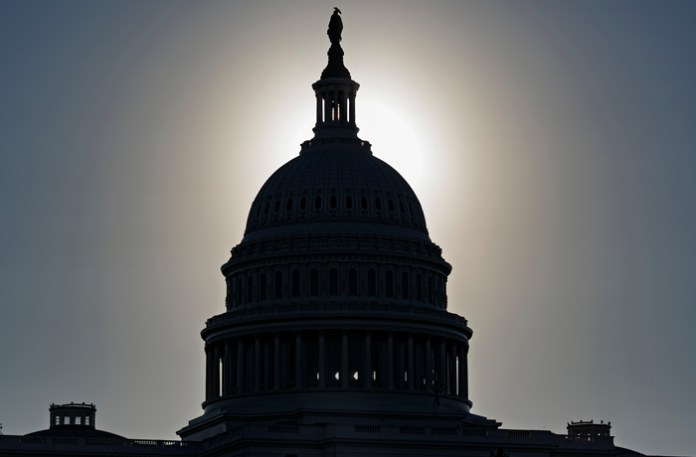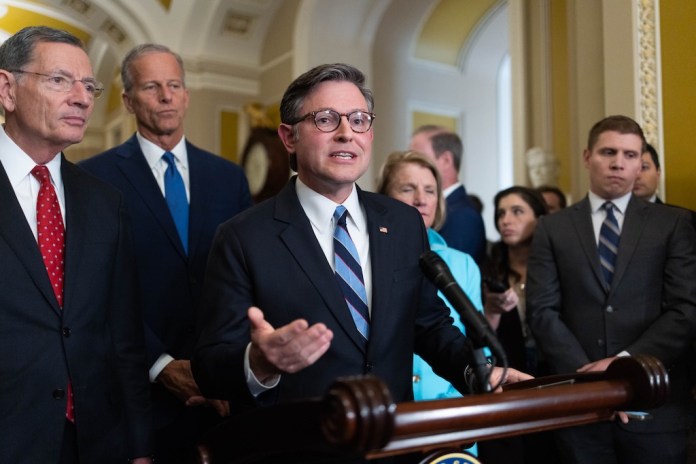Senate appropriators reject House cuts to congressional funding for Capitol Hill operations
The Senate has passed the annual legislative branch spending bill before the August recess, proposing $4.97 billion in funding for the Senate and various legislative agencies. This represents a 5.4% increase, or $257 million more than the previous year, contrasting with the house of Representatives’ proposal to cut congressional funding by about 5.3%. while the Senate’s bill provides most agencies with less funding than requested, it increases Senate offices’ budgets by 6% and committees by 18% to address prior flat budgets during fiscal 2025.
Key agencies such as the Congressional Budget Office (CBO), Government Accountability Office (GAO), Architect of the Capitol, and Library of Congress face cuts or flat funding in the Senate bill, despite rising personnel costs. The Senate measure passed with strong bipartisan support (81-15), whereas the House bill passed largely on party lines (34-28) and included deeper cuts to watchdog agencies like the GAO, sparking criticism from Democrats.
The legislative branch funding bill is the smallest of the 12 annual spending bills, covering about 0.4% of discretionary spending, and is typically noncontroversial. However, the stark difference between House and Senate proposals creates uncertainty about whether they will agree on final funding before the fiscal year ends on September 30. Failure to reconcile could lead to another continuing resolution,further straining congressional operations.
Senate appropriators reject House cuts to congressional funding for Capitol Hill operations
Before leaving Washington for the August recess, the Senate advanced the annual legislative branch spending bill. The measure proposes $4.97 billion in spending on the upper chamber and the various legislative branch agencies, an increase of $257 million, or 5.4%, from this year.
The bill amounts to a rebuke of the lower spending proposed by appropriators in the House of Representatives. But this is no big spending bill. Most of the various legislative branch agencies will receive funding lower than they requested.
The Congressional Budget Office, for example, requested $77.7 million, but the legislation would give it $71.4 million. The Government Accountability Office sought $933.7 million for the coming fiscal year but got $811.9 million, the same amount it received in 2025. The Architect of the Capitol, which is responsible for the maintenance of all the Capitol’s complex of buildings and grounds, sought $1.3 billion. The Senate is offering $698 million, which is $132 million less than the agency received this year.
Flat budgets are a problem for legislative branch agencies because much of their spending goes to paying employees. Compensation costs inevitably grow due to rising healthcare expenses and cost-of-living adjustments for Capitol Police officers, workers at the Architect of the Capitol, and the nonpartisan civil servants inside the Library of Congress and other support agencies. This is to say nothing of the increased costs flowing from employees earning promotions.
Most of the legislation’s higher spending would go to the Senate itself. On the whole, the legislation increases spending by 13% over the previous fiscal year, according to an analysis by the American Governance Institute. This sizable increase was proposed partly because Congress essentially held spending flat the previous year, according to Daniel Schuman, the lead author of the report. Congress operated under a continuing resolution during fiscal 2025.
Legislators’ offices would get 6% more funding.
“This number is driven in part by a formula that increases funding for Senate offices based on population,” Schuman explained. “The premise is that as casework demands increase, Senate offices should have staff able to assist.” Senate committees would see an even larger increase in funding, 18%, but, again, that additional funding aims to make up for the shortfall caused by the flat budget for fiscal 2025.
Both in style and substance, the Senate’s action stands in sharp contrast to the legislative branch bill passed by the House of Representatives earlier in the summer.
The Senate passed its bill with overwhelming bipartisan support. The Appropriations Committee reported the legislation by a 26-1 vote, and the whole body voted in favor, 81-15, with four senators not voting.
The House’s action was riven with partisanship. The Appropriations Committee moved the legislative branch spending bill by a 34-28 vote on party lines.
Republican appropriators advanced a spending bill that would cut current funding by $281.9 million, or 5.3%. The bill would provide a small funding increase to the chamber’s committees and other offices from $1.88 billion to $1.98 billion (5.3%). The legislation would lift spending on the Congressional Budget Office from $70 million to $72 million (2%), and raise the funding of the Congressional Research Service from $131.6 million to $141.1 million (3.7%).
But the bill proposed cuts to two of its key support agencies, which found themselves in the crosshairs of the White House earlier this year. The Library of Congress, which President Donald Trump tried to take control over earlier this year, would get $767.6 million, which is 10% less than its current $852.2 million. The GAO, which has faulted some of Trump’s executive agencies for failing to spend appropriated funds, would have its funding slashed from $811.9 million to $415.4 million (49%). Appropriators also forbade the agency from filing lawsuits, which it legally may do, when the executive branch refuses to spend congressionally approved funds.
Democrats’ efforts to strip the provisions on the GAO and other matters were rejected by the majority. Rep. Rosa DeLauro (D-CT), the panel’s ranking member and its former chairwoman, groused, “It’s astonishing that for all the talk about finding and rooting out waste, fraud, and abuse, House Republicans would defund the watchdog that is tasked with precisely that role.”
DEMOCRATS TO CONSIDER GAZA RESOLUTIONS AT DNC SUMMER MEETING
The legislative branch bill is just one of the 12 spending bills that Congress must pass each year. It is the smallest of the bunch, as the CRS notes, “amounting to 0.4% of total discretionary budget authority.” Typically, it is not a contentious piece of legislation. Lobbyists are few, and the subject matter is not especially ideological because the bill’s subject matter is mostly internal to Congress.
Yet, it is far from clear whether the Senate and House will reconcile their contrasting legislative branch spending bills before the end of the fiscal year at 11:59 p.m. on Sept. 30. Enacting another continuing resolution would put a further pinch on congressional capacity. Spending on Congress in inflation-adjusted dollars has grown a mere 2.5% since 2010 ($6.6 billion to $6.7 billion).
Kevin R. Kosar (@kevinrkosar) is a senior fellow at the American Enterprise Institute and edits UnderstandingCongress.org.
" Conservative News Daily does not always share or support the views and opinions expressed here; they are just those of the writer."




